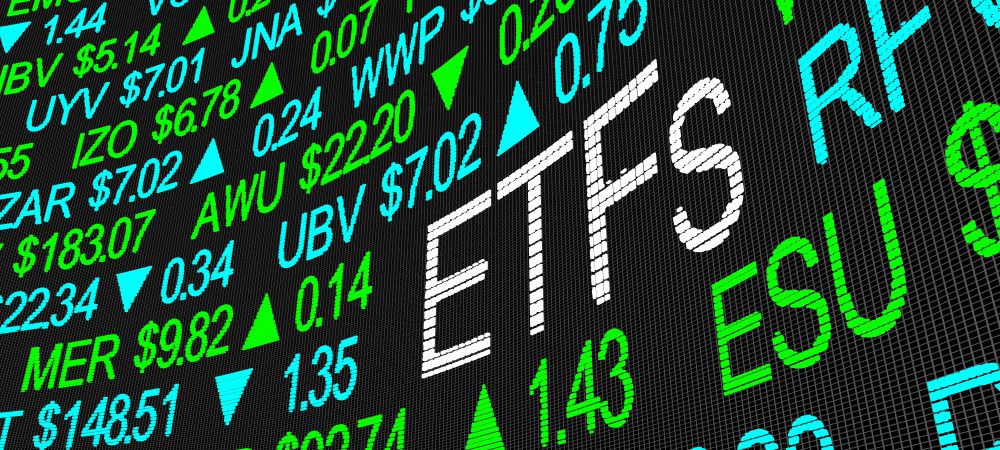3 Options to Invest Now

Hundreds, if not thousands, of people start investing every day. In fact, over the past two years, approximately 30 million new individual investors have opened brokerage accounts in the United States.
First and foremost, the ease of online brokerage has created a revolution for retail investors over the past five years or so. For many new investors, there are so many options that it can be downright daunting to get started, but thanks to exchange-traded funds (ETFs), it doesn’t have to be that way.
The best ETFs for beginners make it easy for new investors to get started. Depending on the ETF, one investment contains dozens, hundreds, or even thousands of stocks that trade like stocks.
Therefore, a single ETF provides access to some of the world’s best companies. Whether you’re fresh out of college or just starting your career, investing in these three great ETFs will make it easy to get started.
1. SPDR S&P 500 ETF Trust
that much SPDR S&P 500 ETF Trust (NYSEARCA:SPY) could be called the grandfather of all ETFs, as it was the first ETF in the United States when it launched in January 1993. Nearly 31 years later, it is the largest ETF in the U.S., with $535 billion in assets under management.
The SPDR ETF invests in the 500 stocks that make up the S&P 500, so you are essentially investing in America’s largest companies at any given time.
This therefore gives you access to the big three holdings: Microsoft (NASDAQ:MSFT), NVIDIA (NASDAQ:NVDA), and Apple (NASDAQ:AAPL), along with the rest of the S&P 500 stocks. Like the S&P 500, the SPDR S&P 500 Trust is market weighted, so the largest stocks have the highest weighting in the portfolio.
Since its launch in 1993, the ETF has recorded an average annual return of 10.3% as of May 31, and has recorded an average annual return of 12.6% over the past 10 years. Year to date, it is up about 15%, reflecting benchmark returns.
Like typical SPDR funds, the S&P 500 ETF Trust has a low expense ratio of 0.09%.
2. Invesco QQQ
that much Invesco QQQ (NASDAQ:QQQ) ETF has been one of the best performing ETFs over the long term. Because it tracks the performance of the Nasdaq 100, it is much more concentrated than the S&P 500 ETF.
Additionally, the Invesco QQQ ETF focuses primarily on the technology sector, as about two-thirds of Nasdaq 100 stocks are in the technology or communication services sector.
The top three holdings are the same as the SPDR S&P 500 fund. However, with only 100 holdings overall, positions in Microsoft, NVIDIA, and Apple are slightly larger. Additionally, the Nasdaq 100 does not include financial stocks, so it has a lot of technology stocks.
As a result, it is often more volatile than the S&P 500, but its aggressive focus on growth stocks has generated higher returns over the long term.
Over the past 20 years, the QQQ ETF has returned an average of 14% per year, while the S&P 500 has returned 8.4%. Over the past 10 years, the ETF has returned an average of 18.3% per year, outpacing the S&P 500’s 10.9% return over that period. Year to date, QQQ is up about 17%.
The ETF has a slightly higher expense ratio at 0.2%, but its performance more than makes up for it.
3. Invesco S&P MidCap Quality ETF
The first two funds on this list are both large-cap ETFs, so they contain significant overlap. However, Invesco S&P Midcap Quality ETF (NYSEARCA:XMHQ) invests in a different world: mid-cap stocks.
Importantly, the ETF focuses on mid-cap stocks that are considered “high quality.” This is because they generate higher profits and cash flows than their counterparts.
The high-quality stocks in this portfolio are based on three primary screens: return on equity, accrual ratio, and financial leverage ratio. Stocks in the S&P MidCap 400 Index are scored based on these screens, and the 80 stocks with the highest scores are selected for the index and portfolio.
Although the ETF only has 80 stocks, a modified market cap weighting system is deployed to ensure exposure to any particular stock or industry is not too high. The idea is to create a portfolio of high-quality mid-cap stocks that generate income and cash flow, which not only generates profits but also provides the ability to weather difficult markets.
The top three holdings currently are Williams-Sonoma (NYSE:WSM), Manhattan Associates (NASDAQ:MANH), and Carlisle Companies (NYSE:CSL).
The ETF was launched in December 2006 and has recorded an average annual return of 9.8% since then. Over the past 10 years, it has returned an average of 12.5% per year. Year-to-date, the fund had gained about 17% as of June 17. The expense ratio is 0.25%.
Diversify with the Best ETFs for Beginners
Combining these funds gives new investors the best of both worlds: the stability of the world’s largest companies, the growth of the best technology companies, and a balance of the best mid-cap stocks on the market at any given time.
By investing in one, two, or all of these ETFs, new investors can gain access to hundreds of the world’s best stocks with a proven track record of success.



